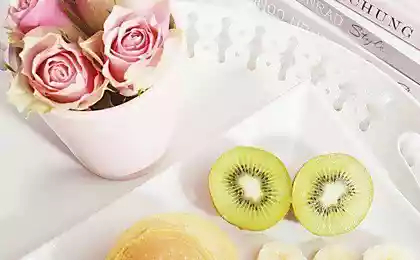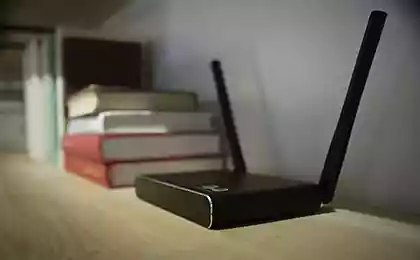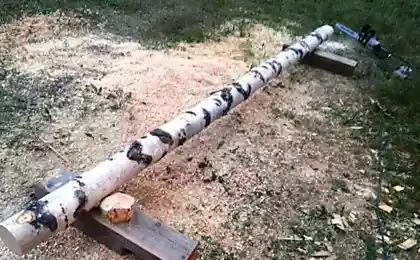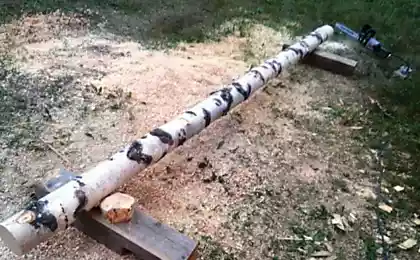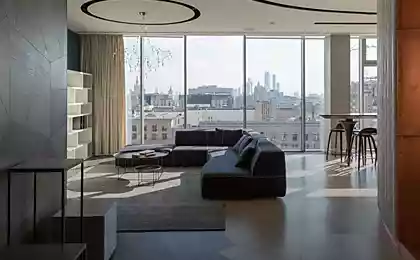461
How to choose non-toxic building materials
It happens that after returning home to his cozy "nest", the person starts suffering from headache, sneezing, coughing, uncomfortable feel. Often the cause of these ailments — environmentally hazardous finishing materials of artificial origin. They look fashionable and are easy to clean, but they undermine our health. Sometimes they do it quietly.
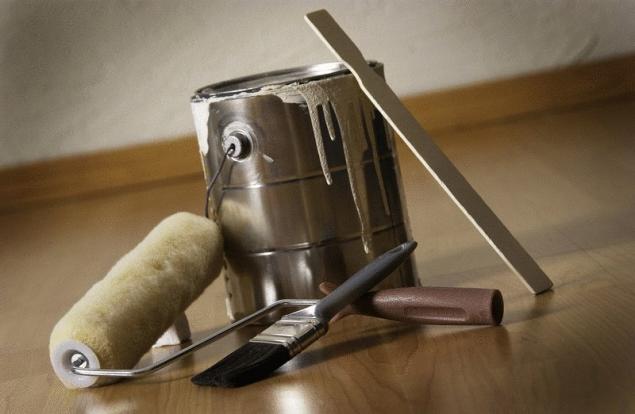
Some synthetic materials emit into the surrounding space pair consisting of various chemicals: phenol, formaldehyde, toluene, benzene and the like, contributing to the emergence of a whole bunch of chronic diseases.
Therefore, the construction or repair be extremely careful with the choice of building materials. We suggest to abandon of PVC products and particle Board, and paint to choose carefully.
Polyvinyl chloride (PVC)
PVC products are made from polyvinyl chloride — a dangerous poison that can destroy the nervous system and cause cancer. The selection of vinyl chloride in the environment increases, even at low heat.
Unfortunately, PVC is a common plastic. You can find it everywhere. In the apartment it is most often found in the form of linoleum (except for some expensive brands), vinyl Wallpaper, plastic window frames, plastic toys (from dolls to children's dental rings). PVC is also used to make different types of packaging, including for food products: bottles, packages, etc.
Buying anything from PVC, remember:
To give PVC flexibility often add so-called plasticizers — phthalates or esters of the phthalates, the ingress of which into the body may cause liver and kidney damage, reducing the protective properties of the organism, infertility, and cancer. PVC can contain other dangerous substances: cadmium, chromium, lead, formaldehyde.
Especially dangerous is PVC incineration. It is known that the combustion of 1 kilogram of PVC produces up to 50 milligrams of dioxins. This is sufficient for development of tumours in 50 000 laboratory animals.
There is no safe recycling technology of PVC. It is almost impossible to re-use and goes in the furnace of incinerators (IGC) or dumped. Dioxins, tirelessly producing incinerators, cover hundreds and thousands of kilometers.
The production of an PVC Windows leads to the formation of about 20 grams of toxic waste. And repair of all
apartments with materials made from PVC, entails the formation of 1 kg (!) toxic waste.
In one year, factories producing PVC, emit several thousand tons of vinyl chloride, endangering the health of workers and inhabitants of nearby settlements.
In the production of PVC also used chlorine, so in its manufacture and disposal into the environment a large amount of dioxins — highly toxic substances that cause cancer and affect the immune system.
How to determine the product made of PVC?
In civilized countries, for the goods from PVC usually put special markings — the number "3" surrounded by arrows. Some manufacturers just write PVC or Vinyl. In Russia, unfortunately, plastic items not practically labeled. However, PVC can be distinguished on several grounds:
by bending the packaging on the line of the bend there is a white strip;
PVC bottles have a bluish or blue color;
another distinctive feature of containers of PVC seam at the bottom of the bottle with two symmetric flows.
Refrain from PVC!
PVC producers assert that without this plastic is impossible; however, it is clear that in most industries PVC can be replaced by wood, metal, glass, "chlorine free" plastic.
Many manufacturers of linoleum has replaced PVC in rubber and other materials. Do not forget also that the floor is always possible to cover the old wooden floor. Window frames made of PVC easy to replace on solid wood or aluminum. The pipes can be installed from polyethylene, steel, copper, carbon steel, earthenware. PVC cables, plugs, connectors, electrical sockets, and line, baskets for paper, pens, etc. can be replaced by analogues of polyethylene, ethylene-vinyl acetate, polyamide, silicone.
Toys PVC also has a much more secure alternative: first and foremost, toys made of polypropylene and polyethylene, as well as cloth, wood, etc. Plastic bags can be replaced by reusable packaging made from environmentally friendly materials: paper, glass, fabric. Instead of vinyl Wallpaper is better to buy paper, and bathroom and kitchen tiles to choose (or water-resistant latex paint — this paint is environmentally friendly).
Chipboard (particleboard)
Most modern furniture is made of particle Board containing urea-formaldehyde or phenol-formaldehyde resin. They are used as binders for wood chips components. When using the DSP in a life of it are harmful formaldehyde and phenol.
Before being placed in the room chipboard furniture, remember the following:
Formaldehyde officially recognized carcinogen, i.e. a substance that can cause cancer. It is colorless and strong-smelling gas, and it is often easy to detect bad smell. Formaldehyde is irritating to mucous membranes of eyes, nose, throat and high concentrations can cause asthma attacks. Formaldehyde is used not only for the production of particleboard. Alone or in combination with other chemicals it is used for the production of resins, plastics, as a component of glues and adhesives, and preservative in some paints.
Under the influence of heat, the rate of release of harmful substances increases. Therefore, particleboard is not recommended to put under the floor for insulation. And chipboard furniture is strictly prohibited to put to the battery.
The CPD formaldehyde at least 14 years. She especially strongly "fonit" in the first year and a half. If you are unable to abandon the use of such furniture, when buying be sure to ask the certificate of its quality (hygienic certificate). Please pay attention to the quality of finish, namely: check whether painted or covered with laminate face surface of the panels and hidden compartments. Threat may also be poorly machined edges and chipped particle Board (for security, be sure to insulate open areas).
When buying products from particle Board please note of which "class of emission" of free formaldehyde they belong — is considered the most secure material belonging to the class E-1 (up to 10 mg of formaldehyde per 100 g of absolutely dry wood boards). If the apartment is already cluttered with furniture made of chipboard, often ventilate the room, and eventually try to replace it.
Paint
In order to best protect yourself from the harmful effects of paints, it is better to give preference to water-soluble or natural paints, casein and lime-casein, and apply the minimum number of layers. It is desirable to paint in a special mask and not to forget good ventilation apartment.
Most paints consist of four main components: resin, solvent, pigments and various additives. Resin is the main ingredient. It forms a layer or film on the painted surface. This component is quite safe and includes linen, acrylic or other synthetic resin.
The solvent keeps the paint in liquid form. In oil paints, the solvent is made of certain fractions of petroleum distillation processes, and may include hazardous substances: mineral spirits, toluene, and Ksilon. In latex paint the solvent is ordinary water.
Pigments give the paint color and opacity. Modern paints are mostly used the following pigments: titanium oxide, iron oxide, calcium sulfate, clay, or silicates. These pigments are relatively nontoxic. However, some brightly colored pigments can contain toxic heavy metals: chromium, cadmium or arsenic.
Buying the varnishes or paints for repair, always look for the inscription "only for the exterior or the interior." Indoors you can only use the materials for internal finishing works.
Never dispose of liquid paint in the garbage or pour it in the drain. Is getting rid of paint can cause pollution of water bodies and the environment.
Bring the paint to the place of gathering of toxic waste. If your district is such a location, contact the maintenance service or DES or return to the manufacturer. According to the law on the protection of the rights of consumers, manufacturers are obliged to ensure disposal of their products.
источник:vk.com
Source: /users/1077

Some synthetic materials emit into the surrounding space pair consisting of various chemicals: phenol, formaldehyde, toluene, benzene and the like, contributing to the emergence of a whole bunch of chronic diseases.
Therefore, the construction or repair be extremely careful with the choice of building materials. We suggest to abandon of PVC products and particle Board, and paint to choose carefully.
Polyvinyl chloride (PVC)
PVC products are made from polyvinyl chloride — a dangerous poison that can destroy the nervous system and cause cancer. The selection of vinyl chloride in the environment increases, even at low heat.
Unfortunately, PVC is a common plastic. You can find it everywhere. In the apartment it is most often found in the form of linoleum (except for some expensive brands), vinyl Wallpaper, plastic window frames, plastic toys (from dolls to children's dental rings). PVC is also used to make different types of packaging, including for food products: bottles, packages, etc.
Buying anything from PVC, remember:
To give PVC flexibility often add so-called plasticizers — phthalates or esters of the phthalates, the ingress of which into the body may cause liver and kidney damage, reducing the protective properties of the organism, infertility, and cancer. PVC can contain other dangerous substances: cadmium, chromium, lead, formaldehyde.
Especially dangerous is PVC incineration. It is known that the combustion of 1 kilogram of PVC produces up to 50 milligrams of dioxins. This is sufficient for development of tumours in 50 000 laboratory animals.
There is no safe recycling technology of PVC. It is almost impossible to re-use and goes in the furnace of incinerators (IGC) or dumped. Dioxins, tirelessly producing incinerators, cover hundreds and thousands of kilometers.
The production of an PVC Windows leads to the formation of about 20 grams of toxic waste. And repair of all
apartments with materials made from PVC, entails the formation of 1 kg (!) toxic waste.
In one year, factories producing PVC, emit several thousand tons of vinyl chloride, endangering the health of workers and inhabitants of nearby settlements.
In the production of PVC also used chlorine, so in its manufacture and disposal into the environment a large amount of dioxins — highly toxic substances that cause cancer and affect the immune system.
How to determine the product made of PVC?
In civilized countries, for the goods from PVC usually put special markings — the number "3" surrounded by arrows. Some manufacturers just write PVC or Vinyl. In Russia, unfortunately, plastic items not practically labeled. However, PVC can be distinguished on several grounds:
by bending the packaging on the line of the bend there is a white strip;
PVC bottles have a bluish or blue color;
another distinctive feature of containers of PVC seam at the bottom of the bottle with two symmetric flows.
Refrain from PVC!
PVC producers assert that without this plastic is impossible; however, it is clear that in most industries PVC can be replaced by wood, metal, glass, "chlorine free" plastic.
Many manufacturers of linoleum has replaced PVC in rubber and other materials. Do not forget also that the floor is always possible to cover the old wooden floor. Window frames made of PVC easy to replace on solid wood or aluminum. The pipes can be installed from polyethylene, steel, copper, carbon steel, earthenware. PVC cables, plugs, connectors, electrical sockets, and line, baskets for paper, pens, etc. can be replaced by analogues of polyethylene, ethylene-vinyl acetate, polyamide, silicone.
Toys PVC also has a much more secure alternative: first and foremost, toys made of polypropylene and polyethylene, as well as cloth, wood, etc. Plastic bags can be replaced by reusable packaging made from environmentally friendly materials: paper, glass, fabric. Instead of vinyl Wallpaper is better to buy paper, and bathroom and kitchen tiles to choose (or water-resistant latex paint — this paint is environmentally friendly).
Chipboard (particleboard)
Most modern furniture is made of particle Board containing urea-formaldehyde or phenol-formaldehyde resin. They are used as binders for wood chips components. When using the DSP in a life of it are harmful formaldehyde and phenol.
Before being placed in the room chipboard furniture, remember the following:
Formaldehyde officially recognized carcinogen, i.e. a substance that can cause cancer. It is colorless and strong-smelling gas, and it is often easy to detect bad smell. Formaldehyde is irritating to mucous membranes of eyes, nose, throat and high concentrations can cause asthma attacks. Formaldehyde is used not only for the production of particleboard. Alone or in combination with other chemicals it is used for the production of resins, plastics, as a component of glues and adhesives, and preservative in some paints.
Under the influence of heat, the rate of release of harmful substances increases. Therefore, particleboard is not recommended to put under the floor for insulation. And chipboard furniture is strictly prohibited to put to the battery.
The CPD formaldehyde at least 14 years. She especially strongly "fonit" in the first year and a half. If you are unable to abandon the use of such furniture, when buying be sure to ask the certificate of its quality (hygienic certificate). Please pay attention to the quality of finish, namely: check whether painted or covered with laminate face surface of the panels and hidden compartments. Threat may also be poorly machined edges and chipped particle Board (for security, be sure to insulate open areas).
When buying products from particle Board please note of which "class of emission" of free formaldehyde they belong — is considered the most secure material belonging to the class E-1 (up to 10 mg of formaldehyde per 100 g of absolutely dry wood boards). If the apartment is already cluttered with furniture made of chipboard, often ventilate the room, and eventually try to replace it.
Paint
In order to best protect yourself from the harmful effects of paints, it is better to give preference to water-soluble or natural paints, casein and lime-casein, and apply the minimum number of layers. It is desirable to paint in a special mask and not to forget good ventilation apartment.
Most paints consist of four main components: resin, solvent, pigments and various additives. Resin is the main ingredient. It forms a layer or film on the painted surface. This component is quite safe and includes linen, acrylic or other synthetic resin.
The solvent keeps the paint in liquid form. In oil paints, the solvent is made of certain fractions of petroleum distillation processes, and may include hazardous substances: mineral spirits, toluene, and Ksilon. In latex paint the solvent is ordinary water.
Pigments give the paint color and opacity. Modern paints are mostly used the following pigments: titanium oxide, iron oxide, calcium sulfate, clay, or silicates. These pigments are relatively nontoxic. However, some brightly colored pigments can contain toxic heavy metals: chromium, cadmium or arsenic.
Buying the varnishes or paints for repair, always look for the inscription "only for the exterior or the interior." Indoors you can only use the materials for internal finishing works.
Never dispose of liquid paint in the garbage or pour it in the drain. Is getting rid of paint can cause pollution of water bodies and the environment.
Bring the paint to the place of gathering of toxic waste. If your district is such a location, contact the maintenance service or DES or return to the manufacturer. According to the law on the protection of the rights of consumers, manufacturers are obliged to ensure disposal of their products.
источник:vk.com
Source: /users/1077
Scientists have proposed a universal and simple method of determining the cancer
Summer Fresh – 4 recipes for gourmets



